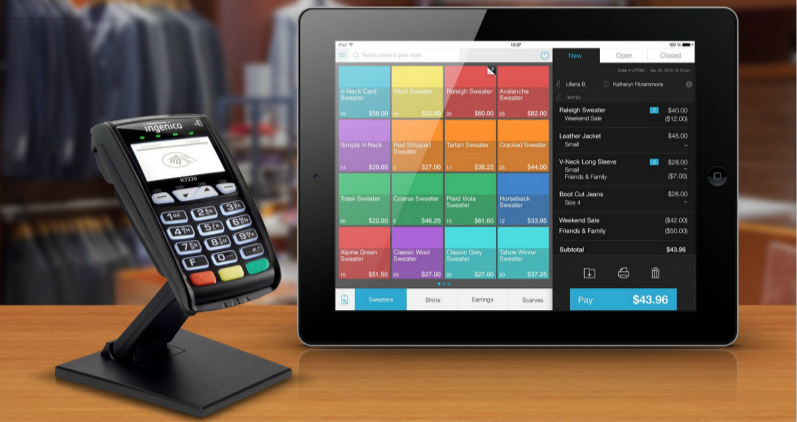It takes a special person to be a restaurateur. They know every inch of their restaurant and how everything works. Besides, they know their clientele. Restaurateurs use their POS software to keep their finger on the pulse of their business.
They take care of orders, the guests at the bar, and many other things. Watching the flow of a busy night with a restaurateur is impressive; some would call it a work of art. Those people anticipate the needs of their customers and the quality service they get.
When they are not taking care of their customers or employees, their POS system can check the inventory, sales numbers, promotions, and reservations without any hassle.

Failed Internet Connection
You can work with your internet provider and keep everything charged and checked. But, if you have an unstable internet connection, sooner or later, your WiFi is going to fail at the worst moment. It might be during dinner rush at a full restaurant or a holiday celebration. What follows would be a thread of errors. That’s why many caterers are back to writing orders with pen and paper, and they keep running back and forth to the kitchen. The kitchen is a madhouse. The orders are messed up, and customers are getting angry, while business is slowly decaying.
Quality Point of Sale POS Systems

There are many good reasons to invest in a quality Point Of Sale system, but none more important than this one. While running your business, you need a POS System that does not go down just because your internet does. Decades have been invested in creating the right POS System for companies that cannot afford a “glitch” in the server.
The mini-computer, to simplify it, will run your restaurant software even if you experience a failed WiFi. If you have a cloud-based Point of sale, you will not miss a beat. Your customers will not be let down due to confusion or lost orders, according to lightspeedhq.com.
Industry leaders use systems that get improved in time. You may own a chain of identical restaurants or various eateries that function differently. Your POS system should expand with you. The features you should look for include:
- Built-in programs that allow you to stay ahead of any trending product people are ordering
- Apple products friendly
- iPad
- iPhone
Do not settle for less!
Training

Training and cross-training employees is always a concern for this industry. Getting everyone together for group training is next to impossible. Also, people do not learn with the same tools or at the same speed.
Of course, you can arrange for people to come in and train the employees in charge, but you have other options as well.
Look for offers of one-on-one onboarding sessions, webinars, demos, and video training. Make sure the training is free of charge and make a plan to train new personnel as they join your company.
As we have previously said, it takes a special person to be a professional restaurateur, and the tools of your trade are essential. The problems you face can be easily solved if you have the right POS system. So, take your time and find a system that has it all.
Purchasing Guide for Point of Sale Software

How to Select the Right Restaurant Point of Sale Software
Choosing the right point of sale software for your restaurant can be confusing. Follow the steps below to identify your restaurant point of sale software needs.
STEP 1: Define Your Deployment Needs
Number of Locations and Number of Records Per Location
Restaurant software is manufactured for various deployment scenarios. Makers of restaurant software can design software for a single point of sale register installation, multiple points of sale registers, and multiple restaurant locations. You can vastly narrow your options just by understanding your location’s needs.

The network infrastructure of multiple registries, point of sale or multiple locations
The operating system and hardware requirements vary between software packages and will affect the cost of running your restaurant point of sale system. While one software package might support peer-to-peer provisioning of the Windows point of sale station, another may require a Windows server operating system for POS registrations or multiple restaurant locations. The hardware and costs for networking two or more point of sale registries that run the same software in a single area or between various sites must be factored into the budget.
POS Hardware Compatibility
The compatibility of point of sale hardware varies between software packages. Be sure
to consult the software on hardware requirements before touch screen computers, of the receipt printers, post displays, card readers, cash drawers, and barcode purchasing scanners. If you have existing POS hardware components, be aware that your new restaurant software may not be compatible.
If you need just one point of sale registration or multiple POS stations, consider purchasing a complete POSGuys restaurant point of sale system bundling restaurant software with all hardware required, pre-configured for guaranteed compatibility. If you choose to buy restaurant software separately from point-of-sale device, consult a reseller about the various performance requirements for the point-of-sale software packages you are evaluating, and find out if your reseller offers on-site services of the installation.

STEP 2: Define Critical and Secondary Features Identify the Features You Need
Determine the critical functionality you need in a restaurant point-of-sale software package. Use our feature comparison chart to identify features commonly found in point-of-sale software packages from the restaurant and to build a list that suits your needs. Note which of these characteristics are critical, secondary needs, and which features are unnecessary for your position.
STEP 3: Evaluate and Compare
Software Packages Contact Industry Resources for Recommendations
Contact a reputable reseller with expertise in the point of sale industry. Based on system requirements and feature criteria, ask for a recommendation on a variety of restaurant point-of-sale software packages. Be sure to ask for the demo or trial versions, which are generally downloadable. If desired, directly contact the software manufacturer for the names of the restaurants that use their point software selling. Contact those references for your feedback on ease of installation, usability, features, and performance.
Understand the Software Manufacturer’s Customer Support, Upgrade, and Return Policies. Support and upgrade policies vary significantly between manufacturers of point of sale software. While one may require the paid help contract with the purchase, another manufacturer may include up to one year of free help with the purchase.
Some software vendors only include software patches for current versions with the purchase, while others offer full version upgrades for the first year. Be aware that most computer companies do not accept returns on software and do not guarantee the suitability of their software for any particular purpose; neither do resellers. It is an industry-standard rule, making your evaluation of the trial version of point-of-sale free software essential to ensure satisfaction.
Install Demo Versions to Evaluate Features and User Interface

Once you have narrowed your choice down to those point software packages only selling that fits your critical features criteria, and hopefully the secondary standards, install demo versions on your PC. Evaluate each software in depth from the functionality for those features. Also, consider the ease of use and intuitiveness of the user interface.
Restaurants with numerous staff and high sales volume can put more weight on ease of use to save the cost and time associated with new training users. One that has a hands-on evaluation of critical features and usability, it’s time to narrow your choice and make a purchase decision. Revisit your computer system requirements and have a list of final questions for your reseller.


